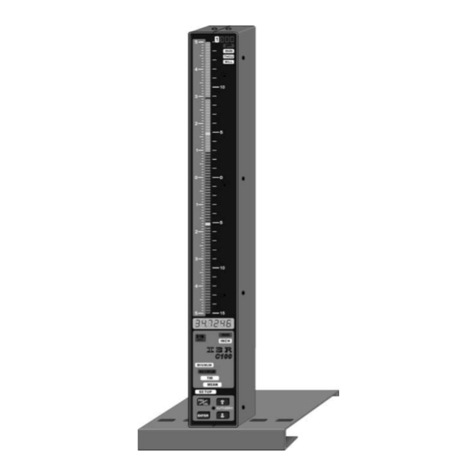
2
Instruction Manual C200
Contents
1. Introduction
1.1 General information .............................................................................................................. : 4
1.2 Measuring and display features ...........................................................................................: 4
1.3 Front and rear view .............................................................................................................. : 5
1.4 Dimensions .......................................................................................................................... : 6
1.5 Hole pattern for interconnection ........................................................................................... : 6
1.6 Technical data ...................................................................................................................... : 7
2. Getting started
2.1 Delivered items...................................................................................................................... : 8
2.2 Fitting the base ..................................................................................................................... : 8
2.3 Fitting the IMBus modules .................................................................................................... : 8
2.3.1 Removal of C200 column cover ................................................................................. : 8
2.3.2 Connecting the IMBus modules ................................................................................. : 9
2.3.3 Fitting of bus terminator .............................................................................................. : 10
2.3.4 Fitting IMBus modules into the C200 column gauge .................................................. : 11
2.3.5 Fitting of C200 column cover ..................................................................................... : 11
2.4 Measuring input addresses .................................................................................................. : 12
2.5 Connecting several column gauges ..................................................................................... : 13
2.6 Power supply connection ..................................................................................................... : 14
2.7 Connecting a foot or hand switch ......................................................................................... : 15
2.8 Connecting adapters for tolerance outputs .......................................................................... : 15
2.9 Connecting a PC, multiplexer or statistic printer .................................................................. : 16
2.10 Connection of wireless module ............................................................................................ : 16
2.11 Connection of probes, air plug gauges, sensors and measuring instruments ..................... : 17
2.12 IMBus modules at a glance .................................................................................................. : 19
2.13 Power on / Self-test .............................................................................................................. : 19
3. Programming the column gauge
3.1 Encoder functions ................................................................................................................. : 20
3.2 Foot and hand switch functions ............................................................................................ : 20
3.3 Quick programming guide for programmers in a hurry ........................................................ : 21
3.4 Description of the calibration mode ...................................................................................... : 22
3.4.1 Zero adjustment / Calibration ..................................................................................... : 22
3.4.2 Probe setup ................................................................................................................ : 23
3.4.3 Restrictor adjustment on IMB-ae1 pneumatic measuring converters ........................ : 23
3.5 Description of the programming menu ................................................................................. : 24
3.6 Basic Setup .......................................................................................................................... : 29
3.7 Restoring factory settings ..................................................................................................... : 33
3.8 Error messages / Corrective actions .................................................................................... : 34
3.8.1 Operating and programming errors ........................................................................... : 34
3.8.2 System errors ............................................................................................................. : 35
4. Working with the column gauge
4.1 Initial operation ..................................................................................................................... : 36
4.2 Measuring operation ............................................................................................................. : 36
4.3 Mechanical setup of inductive probes .................................................................................. : 36
4.4 Restrictor adjustment on IMB-ae1 moduls ………………………………………………………: 37
4.5 Automatic zero adjustment of gauges .................................................................................. : 38
4.6 Automatic gauge calibration ................................................................................................. : 38
4.7 Multi gauging ( C1...C8 ) ...................................................................................................... : 38






























